7 Ways of Exploring Emotions Through Art Therapy
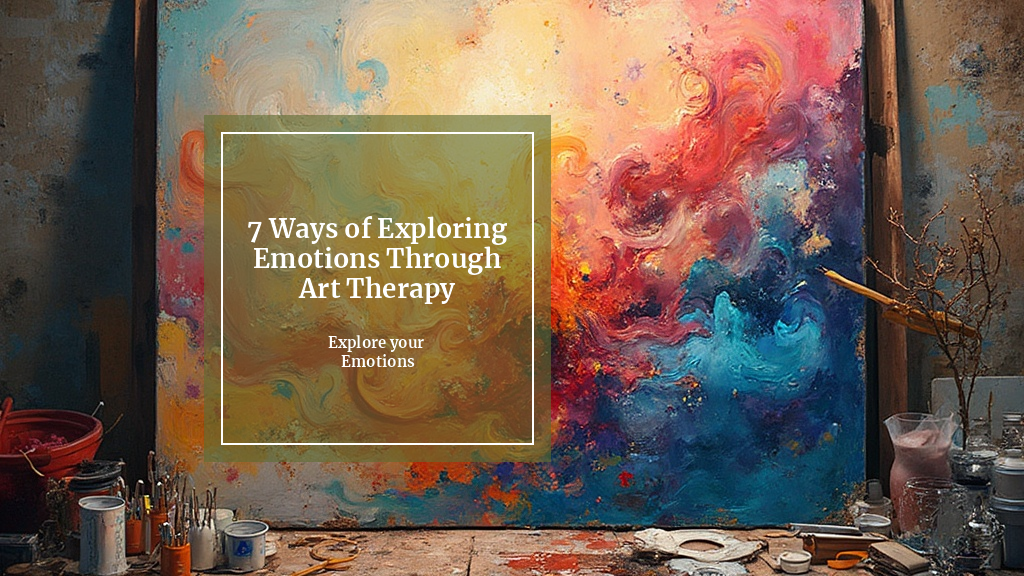
Table of Contents
- Introduction to Art Therapy and Emotional Exploration
- 1. Expressive Painting: Unleashing Emotions on Canvas
- 2. Mandala Drawing: Finding Inner Balance
- 3. Collage Making: Piecing Together Emotional Narratives
- 4. Clay Sculpting: Molding Emotions into Form
- 5. Art Journaling: Visual Diary of Emotions
- 6. Body Mapping: Exploring Emotions Through Self-Representation
- 7. Group Mural: Collaborative Emotional Expression
- Conclusion
Introduction to Art Therapy and Emotional Exploration
Art therapy has emerged as a powerful tool for exploring and expressing emotions, offering a unique avenue for self-discovery and healing. By engaging in creative processes, individuals can tap into their innermost feelings, often uncovering insights that may be difficult to articulate through words alone. Art Therapy Practitioner Learn more about the transformative power of art in emotional healing and personal growth.
The beauty of art therapy lies in its accessibility and versatility. Whether you’re dealing with stress, anxiety, trauma, or simply seeking a deeper understanding of your emotional landscape, art therapy provides a safe and nurturing environment for exploration. As noted in a comprehensive overview by Immunize Nevada, art therapy offers a non-verbal avenue for processing emotions, reducing stress, and fostering psychological well-being.
In this blog post, we’ll delve into seven powerful ways to explore emotions through art therapy. These techniques have been carefully selected to cater to various preferences and needs, ensuring that everyone can find a method that resonates with them. Whether you’re a seasoned artist or someone who hasn’t picked up a paintbrush since childhood, these approaches are designed to be accessible and effective for all skill levels.
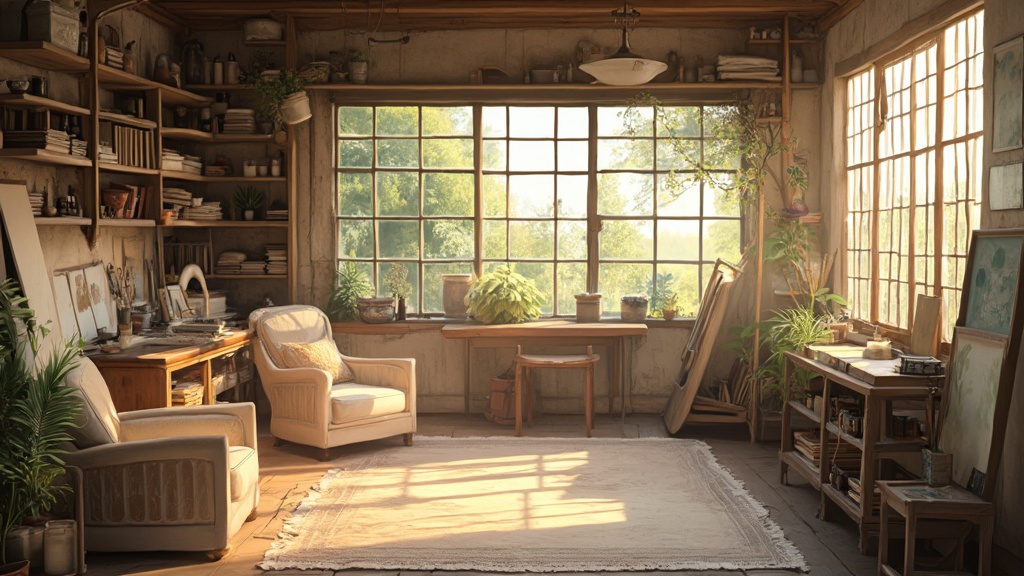
Before we dive into the specific techniques, it’s important to remember that the goal of art therapy is not to create masterpieces, but to engage in a process of self-expression and discovery. As you explore these methods, focus on the experience rather than the outcome. Let’s begin our journey into the world of emotional exploration through art therapy.
1. Expressive Painting: Unleashing Emotions on Canvas
Time Required: 30-60 minutes
Materials Needed: Canvas or paper, acrylic or watercolor paints, brushes, water, palette
Expressive painting is a powerful technique that allows individuals to translate their emotions directly onto canvas without the constraints of form or structure. This method is particularly effective for those who find it challenging to verbalize their feelings or for anyone looking to explore their emotional landscape in a visceral, immediate way.
To begin, set up your painting area with all the necessary materials. Choose colors that resonate with your current emotional state. There’s no need to plan or sketch; the goal is to let your emotions guide your brush strokes. As you paint, focus on the sensations and feelings that arise, allowing them to flow through you and onto the canvas.
Dr. Sarah Thompson, a renowned art therapist, explains, “Expressive painting bypasses our cognitive filters, allowing for a direct expression of our subconscious emotions. It’s not uncommon for clients to uncover feelings they weren’t even aware they were harboring.”
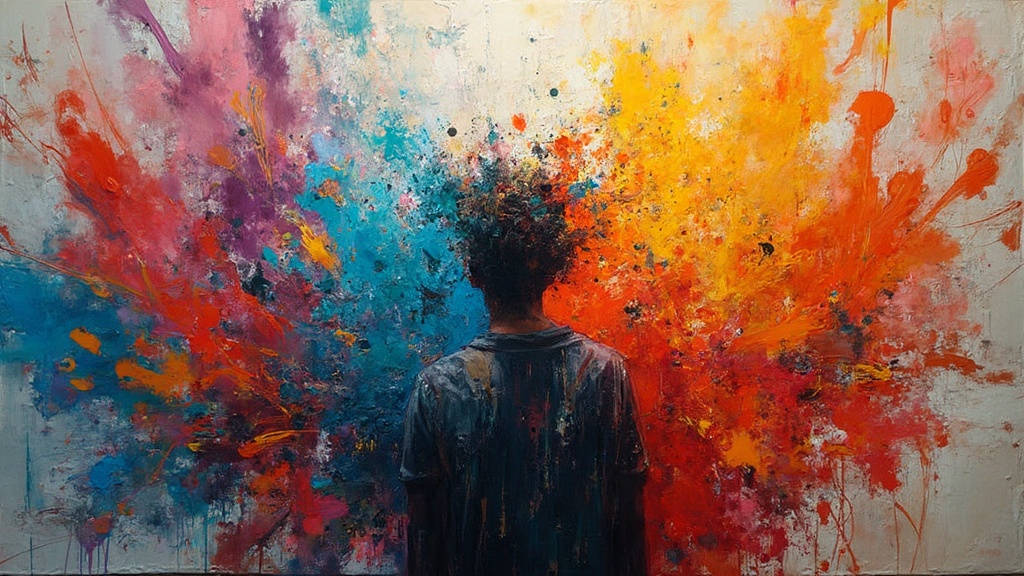
As you engage in expressive painting, you might find yourself drawn to certain colors or creating particular shapes. These choices can offer insights into your emotional state. For example, bold, jagged lines might indicate anger or frustration, while soft, flowing strokes could represent calmness or contentment.
Remember, there’s no right or wrong way to approach expressive painting. The process is as important as the final product. Many find this technique to be cathartic, offering a release for pent-up emotions. Others discover a sense of clarity or peace through the act of painting.
For those interested in delving deeper into the world of art therapy, the Introduction to Art Therapy course offers valuable insights into various techniques, including expressive painting.
Benefits: – Provides a non-verbal outlet for complex emotions – Promotes stress relief and relaxation – Enhances self-awareness and emotional intelligence – Offers a cathartic release for pent-up feelings – Encourages mindfulness and present-moment awareness
Expressive painting can be particularly beneficial for those dealing with anxiety or depression. As highlighted in the article on art therapy activities for depression, creative expression can play a crucial role in managing symptoms and promoting emotional well-being.
2. Mandala Drawing: Finding Inner Balance
Time Required: 45-90 minutes
Materials Needed: Paper (preferably circular), colored pencils, markers, or fine-tipped pens, compass or circular objects for tracing
Mandala drawing is a centuries-old practice that has found its way into modern art therapy due to its meditative and balancing properties. The word “mandala” comes from Sanskrit, meaning “circle,” and these intricate designs are often used as tools for focusing attention and promoting spiritual growth.
To begin creating a mandala, start with a circle on your paper. This can be drawn freehand or traced using a compass or circular object. From the center point, begin to add shapes, patterns, and designs that radiate outward. As you draw, let your intuition guide you, choosing colors and forms that resonate with your current emotional state.
Art therapist Lisa Gardner notes, “The circular nature of mandalas represents wholeness and continuity. As clients create these designs, they often report a sense of calm and centeredness, making it an excellent tool for emotional regulation.”
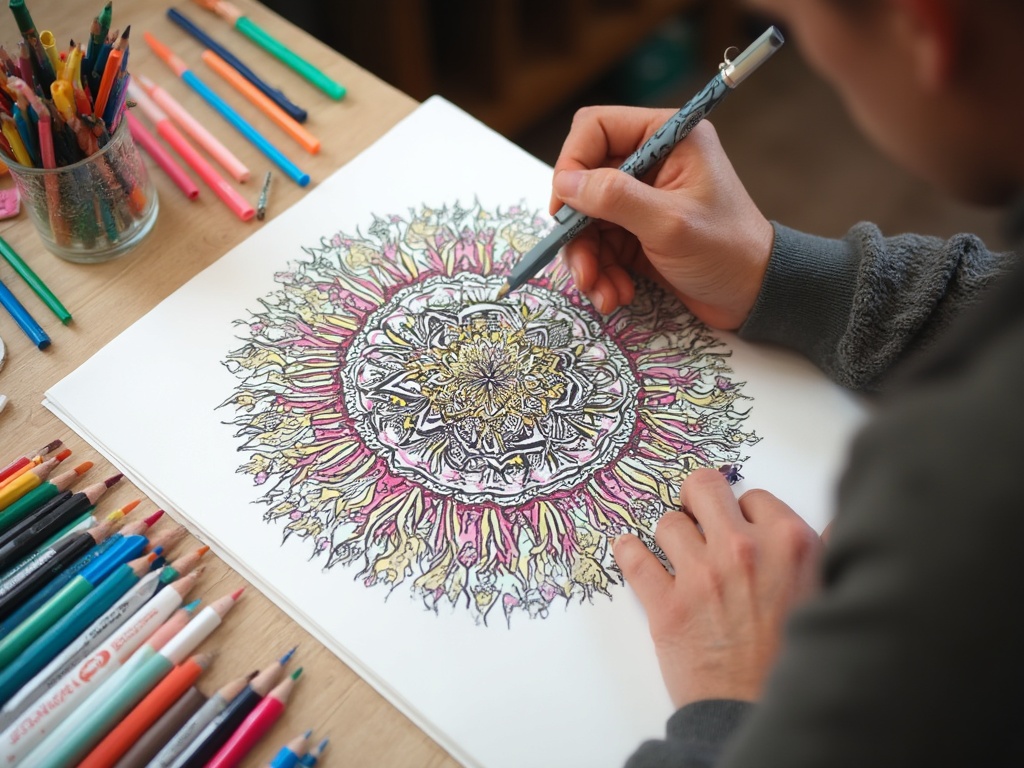
The process of creating a mandala can be deeply introspective. As you work from the center outwards, you may find that certain emotions or thoughts come to the surface. Pay attention to these insights, as they can provide valuable information about your inner emotional landscape.
Mandala drawing is particularly effective for those dealing with anxiety or stress. The repetitive, focused nature of the activity can induce a state similar to meditation, promoting relaxation and mental clarity. This aligns with the findings discussed in the article on benefits of adult coloring for stress, which highlights the calming effects of repetitive artistic activities.
For those looking to incorporate mandala drawing into their daily routine, the 50 Art Therapy Exercises for Children, Adults, and Seniors resource offers a variety of mandala-based activities suitable for different age groups and skill levels.
Benefits: – Promotes relaxation and stress reduction – Enhances focus and concentration – Encourages self-reflection and emotional awareness – Fosters a sense of inner balance and harmony – Provides a meditative experience through artistic expression
As you explore mandala drawing, remember that the process is more important than creating a perfect design. Allow yourself to be fully present in the act of creation, and you may find that this simple yet profound practice becomes a valuable tool in your emotional exploration journey.
3. Collage Making: Piecing Together Emotional Narratives
Time Required: 60-90 minutes
Materials Needed: Magazines, newspapers, photographs, scissors, glue, cardboard or heavy paper for the base
Collage making is a versatile and accessible art therapy technique that allows individuals to explore their emotions through the selection and arrangement of images and text. This method is particularly effective for those who may feel intimidated by drawing or painting, as it relies on existing materials to create a personal narrative.
To begin, gather a variety of magazines, newspapers, and personal photographs. The key is to have a diverse range of images and text to choose from. As you flip through these materials, pay attention to the images or words that resonate with your current emotional state or experiences. Cut out these elements and set them aside.
Dr. Emily Chen, a leading art therapist, explains, “Collage making taps into our subconscious. The images we’re drawn to often reflect deeper emotional states or desires that we may not be fully aware of consciously.”
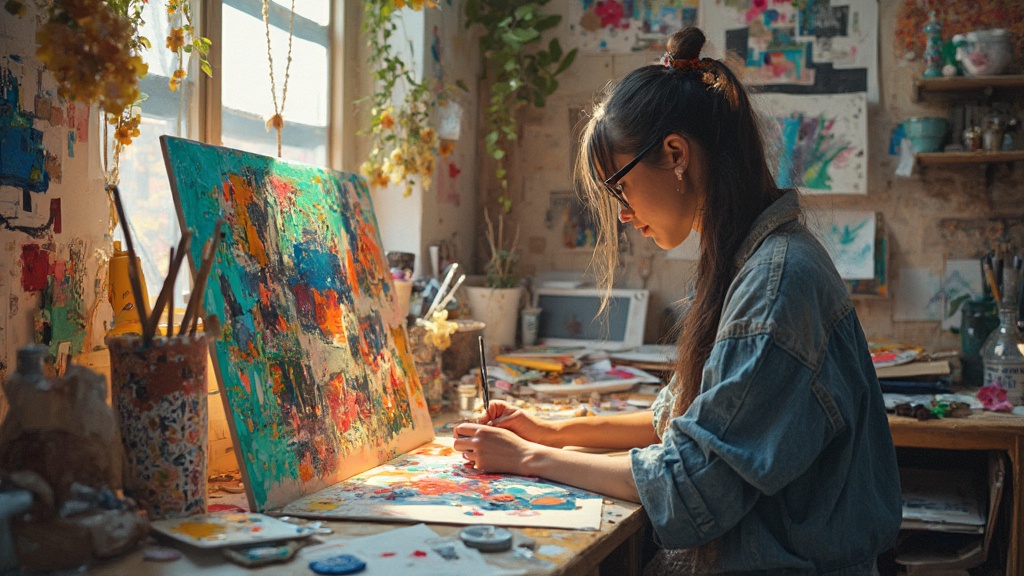
Once you have a collection of cut-outs, begin arranging them on your base. There’s no right or wrong way to do this – trust your intuition and allow the placement to feel natural. You may find that certain themes or patterns emerge as you create your collage. These can provide valuable insights into your emotional landscape.
Collage making can be particularly beneficial for processing complex emotions or experiences. The act of piecing together different elements to create a cohesive whole can mirror the process of integrating various aspects of our emotional lives. This technique is often used in trauma therapy, as discussed in the study on the effectiveness of art therapy in treating traumatized adults.
For those interested in exploring collage making further, the Official Printed Book: 50 Art Therapy Exercises for Children, Adults, and Seniors offers a range of collage-based activities suitable for various age groups and therapeutic goals.
Benefits: – Facilitates the exploration of complex emotions and experiences – Encourages creative problem-solving and decision-making – Provides a tangible representation of internal emotional states – Promotes self-discovery and personal insight – Offers a low-pressure artistic outlet for those intimidated by other art forms
As you engage in collage making, remember that the process is as important as the final product. Allow yourself to be curious about your choices and the emotions that arise as you create. This technique can be a powerful tool for self-expression and emotional exploration, offering insights that may surprise and enlighten you.
4. Clay Sculpting: Molding Emotions into Form
Time Required: 45-75 minutes
Materials Needed: Air-dry clay or modeling clay, sculpting tools (optional), water for smoothing, work surface
Clay sculpting offers a unique tactile experience in art therapy, allowing individuals to physically mold and shape their emotions into three-dimensional forms. This hands-on approach can be particularly effective for those who benefit from kinesthetic experiences or find it challenging to express themselves through two-dimensional art forms.
To begin, take a moment to center yourself and reflect on your current emotional state. Then, start working with the clay, allowing your hands to move intuitively. There’s no need to plan or create a specific object – the goal is to let your emotions guide the sculpting process.
Art therapist Michael Roberts notes, “The malleability of clay makes it an excellent medium for emotional expression. Clients often report feeling a sense of control and catharsis as they manipulate the clay, which can be especially beneficial for those dealing with anxiety or trauma.”
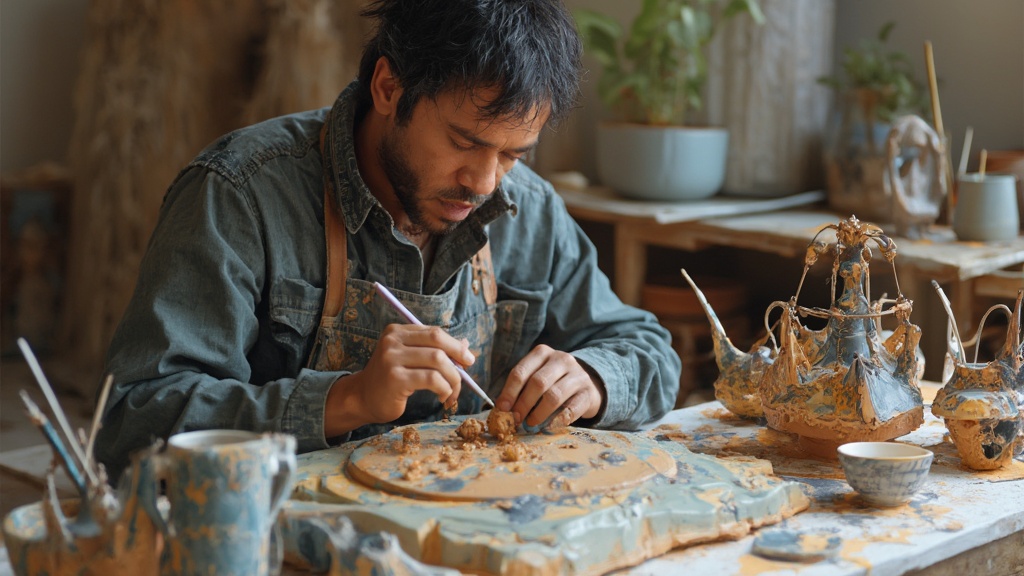
As you work with the clay, pay attention to the sensations in your hands and the emotions that arise. You might find yourself creating smooth, rounded forms that represent calmness or jagged, irregular shapes that reflect inner turmoil. The physical act of kneading, pinching, and shaping the clay can be a powerful outlet for pent-up emotions.
Clay sculpting can be particularly beneficial for individuals who struggle with verbalizing their feelings. The three-dimensional nature of the medium allows for a more tangible representation of complex emotional states. This aligns with the insights shared in the article on how you can express your emotions through art, which explores various artistic methods for emotional expression.
For those interested in incorporating clay sculpting into their art therapy practice, the Making a Living in Art course offers valuable insights into various artistic techniques, including sculpting, and how they can be applied in therapeutic settings.
Benefits: – Provides a tactile outlet for emotional expression – Promotes stress relief and relaxation through physical engagement – Enhances mind-body connection and awareness – Offers a sense of control and mastery over the medium – Facilitates the exploration of three-dimensional emotional representation
As you explore clay sculpting, remember that the process is more important than creating a polished final product. Allow yourself to be fully present in the tactile experience, and you may find that this hands-on approach offers new insights into your emotional landscape.
5. Art Journaling: Visual Diary of Emotions
Time Required: 30-60 minutes per session (ongoing practice)
Materials Needed: Sketchbook or journal, various art supplies (pens, markers, paints, collage materials), glue, scissors
Art journaling is a versatile and personal approach to exploring emotions through art therapy. This technique combines visual art with written reflection, creating arich, multi-layered record of your emotional journey. Art journaling is particularly effective for those who enjoy both visual expression and writing, offering a holistic approach to emotional exploration.
To begin an art journal, choose a sketchbook or journal that feels comfortable and inviting. There are no strict rules for art journaling – each page can be a unique combination of drawings, paintings, collages, and written reflections. Start by setting aside regular time for your art journaling practice, even if it’s just a few minutes each day.
Dr. Rachel Green, a specialist in expressive arts therapy, explains, “Art journaling provides a safe, private space for individuals to process their emotions visually and verbally. The combination of art-making and reflective writing can lead to profound insights and emotional healing.”
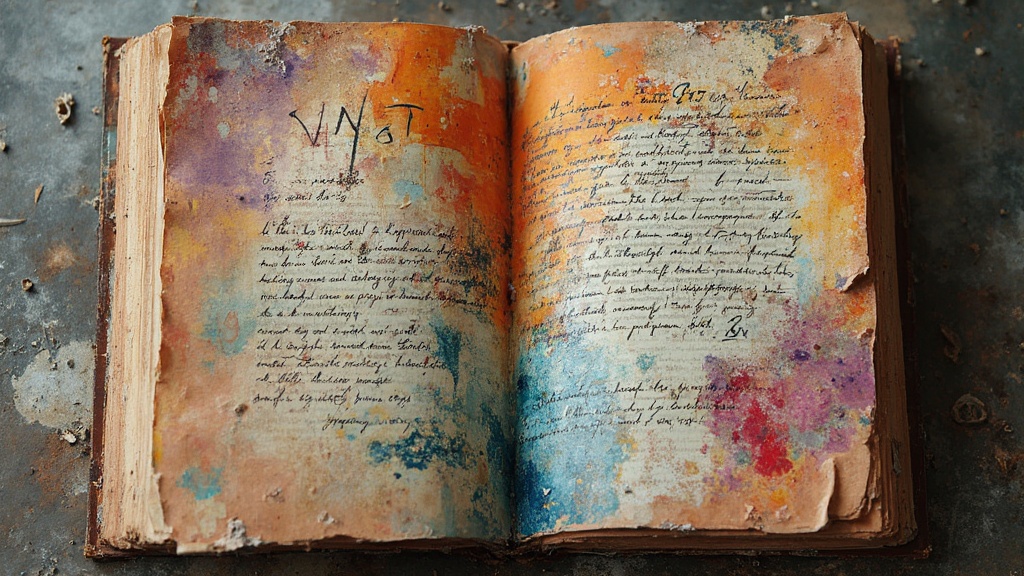
As you create your art journal entries, focus on expressing your current emotional state or reflecting on significant experiences. You might start with a color that represents your mood, add imagery that resonates with your feelings, and then write about the emotions that arise during the process. The fun and empowerment through art therapy article highlights how creative expression can be both enjoyable and transformative.
Art journaling can be particularly beneficial for managing anxiety, depression, or processing traumatic experiences. The regular practice of visual and written self-expression can help track emotional patterns, identify triggers, and document personal growth over time. This aligns with the findings discussed in the case study on PTSD and the arts: a path to healing our healers, which explores the therapeutic potential of creative expression for trauma recovery.
Benefits: – Provides a regular outlet for emotional expression and self-reflection – Combines visual and verbal processing for holistic emotional exploration – Offers a private, judgment-free space for personal growth – Helps track emotional patterns and progress over time – Enhances self-awareness and emotional intelligence
As you develop your art journaling practice, remember that consistency is more important than perfection. Allow your journal to be a true reflection of your emotional journey, embracing both the challenging and uplifting moments.
6. Body Mapping: Exploring Emotions Through Self-Representation
Time Required: 90-120 minutes
Materials Needed: Large paper or canvas, paints, markers, collage materials, scissors, glue
Body mapping is a powerful art therapy technique that involves creating a life-sized outline of your body and filling it with visual representations of your emotions, experiences, and personal narrative. This method offers a unique way to explore the connection between emotions and physical sensations, promoting a deeper understanding of the mind-body relationship.
To begin, lay out a large piece of paper on the floor or against a wall. Have a partner trace the outline of your body, or create a symbolic body shape yourself. Once you have the outline, begin to fill it with colors, images, and symbols that represent your emotional experiences.
Art therapist Dr. Amanda Chen explains, “Body mapping allows individuals to externalize their internal experiences, creating a visual representation of how emotions manifest in the body. This process can lead to profound insights about emotional patterns and physical sensations.”
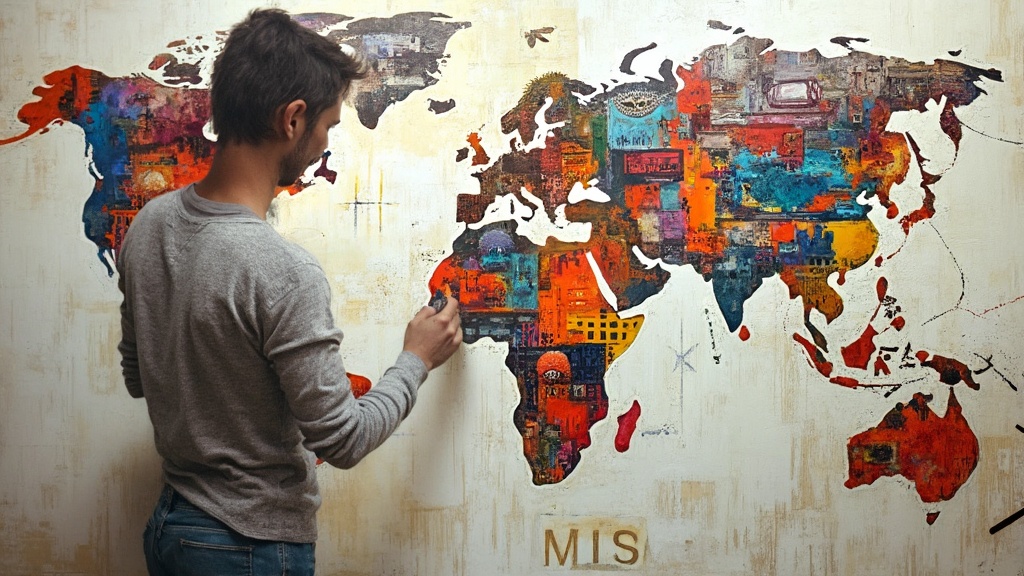
As you create your body map, pay attention to where you place certain emotions or experiences. You might use warm colors in your chest to represent love or joy, or dark swirls in your stomach to depict anxiety. The process of creating a body map can be particularly helpful for those dealing with chronic pain, trauma, or body image issues.
Body mapping can be an intense and revealing process. It’s important to approach it with self-compassion and, if possible, under the guidance of a trained art therapist. The art therapy certification and licence page provides information on professional training for those interested in facilitating this type of therapeutic work.
For individuals struggling with sleep issues related to emotional distress, body mapping can be a valuable tool for identifying areas of tension or stress. The ultimate guide to art therapy for sleep offers additional insights into how artistic expression can promote relaxation and better sleep quality.
Benefits: – Enhances awareness of the mind-body connection – Provides a visual representation of emotional experiences – Facilitates the exploration of body image and self-perception – Helps identify patterns in how emotions manifest physically – Promotes a holistic understanding of personal narratives and experiences
Remember, the goal of body mapping is not to create a aesthetically perfect artwork, but to engage in a process of self-discovery and emotional exploration. Allow yourself to be open to the insights that emerge during this powerful exercise.
7. Group Mural: Collaborative Emotional Expression
Time Required: 120-180 minutes
Materials Needed: Large paper or canvas, various paints, brushes, markers, collage materials, adhesives
Creating a group mural is a collaborative art therapy technique that allows multiple individuals to explore and express their emotions together. This method is particularly effective in group therapy settings, family therapy, or community healing projects, as it fosters connection, communication, and shared emotional experiences.
To begin, set up a large canvas or paper in a space where all participants can easily access it. Provide a variety of art materials to accommodate different preferences and styles. Establish a theme or prompt related to emotional exploration, such as “Our Emotional Journey” or “Building Resilience Together.”
Dr. Sarah Thompson, a group art therapy specialist, notes, “Group murals create a shared space for emotional expression, allowing individuals to see how their experiences connect with others. This process can reduce feelings of isolation and foster a sense of community.”
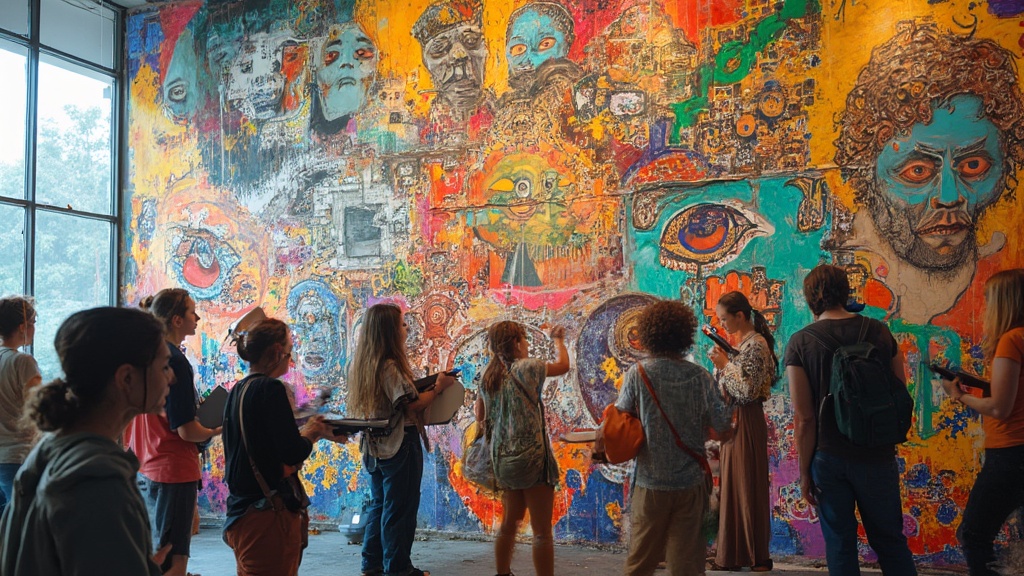
As participants work on the mural, encourage them to express their emotions freely while also being mindful of others’ contributions. The process of creating together can lead to meaningful discussions about shared experiences, differing perspectives, and collective emotional landscapes.
Group mural creation can be particularly beneficial for building empathy and understanding among family members or in community settings. The art therapy: getting the best out of children article offers insights into how collaborative art projects can benefit younger participants.
For those interested in facilitating group art therapy sessions, including mural projects, the Introduction to Art Therapy course provides valuable knowledge and techniques for group facilitation.
Benefits: – Fosters connection and communication among participants – Promotes empathy and understanding of shared experiences – Reduces feelings of isolation through collaborative creation – Encourages the exploration of collective emotional themes – Provides a tangible representation of group dynamics and shared narratives
As you engage in the group mural process, remember that the goal is not to create a perfectly cohesive artwork, but to facilitate a meaningful shared experience of emotional exploration and expression.
Conclusion
Exploring emotions through art therapy offers a powerful and transformative journey of self-discovery and healing. The seven techniques we’ve explored – expressive painting, mandala drawing, collage making, clay sculpting, art journaling, body mapping, and group mural creation – each provide unique avenues for accessing and processing our deepest feelings.
As we’ve seen, these art therapy approaches can be beneficial for a wide range of emotional challenges, from managing anxiety and depression to processing trauma and improving overall well-being. The tactile and visual nature of art therapy allows for a more holistic approach to emotional exploration, often revealing insights that may be difficult to access through verbal therapy alone.
It’s important to remember that art therapy is a personal journey, and what resonates with one individual may differ for another. Feel free to experiment with these techniques, adapting them to suit your needs and preferences. For those interested in delving deeper into the world of art therapy, consider exploring the Art Therapy Practitioner course, which offers comprehensive training in various art therapy techniques and their applications.
Whether you’re dealing with specific emotional challenges or simply seeking to enhance your self-awareness and emotional intelligence, incorporating art therapy techniques into your life can be a rewarding and enlightening experience. As you embark on this creative journey of emotional exploration, remember to approach the process with curiosity, compassion, and an open mind.
By engaging in these art therapy practices, you’re not just creating art – you’re creating a deeper understanding of yourself, paving the way for emotional growth, healing, and a more authentic expression of your inner world.
Explore More
- Art Therapy Certification and Licence
- Ultimate Guide: Art Therapy for Sleep
- Art Therapy Activities for Depression
- Benefits of Adult Coloring for Stress
- How Can You Express Your Emotions Through Art
- Fun and Empowerment Through Art Therapy
- Art Therapy: Getting the Best Out of Children
- 10 Creative Ways to Use Art Therapy with Children
- 10 Creative Ways to Use Art Therapy with Adults

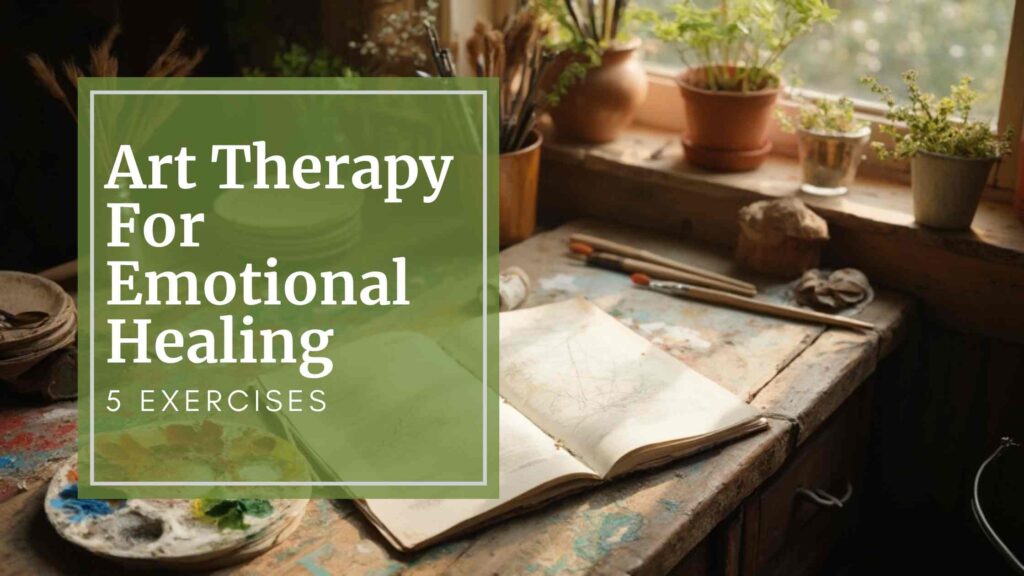
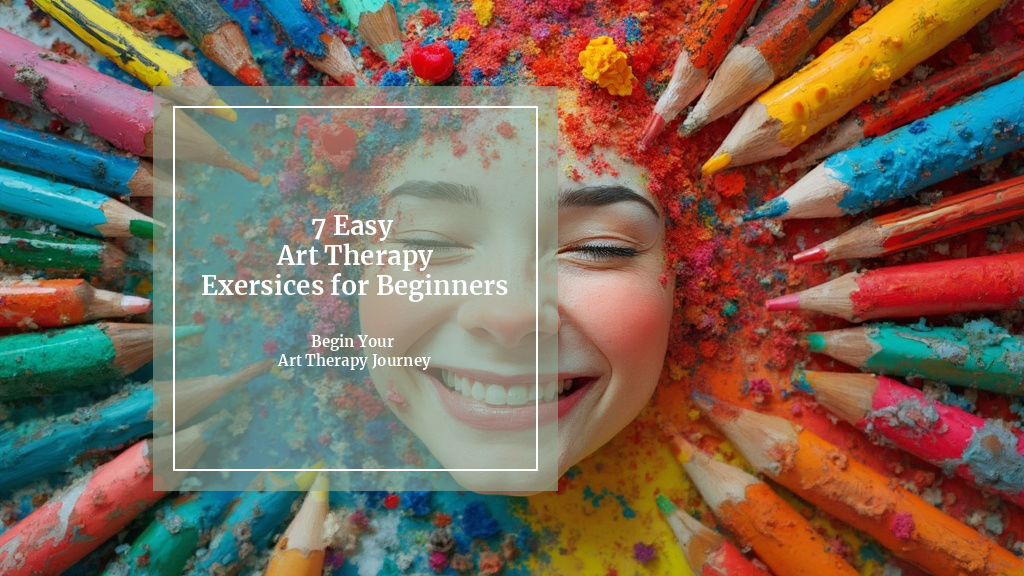
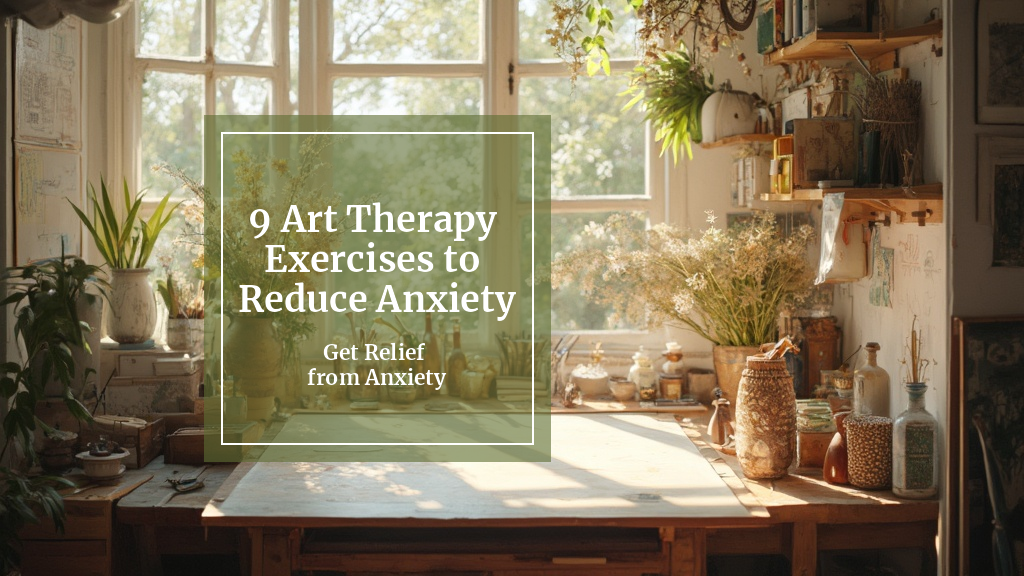
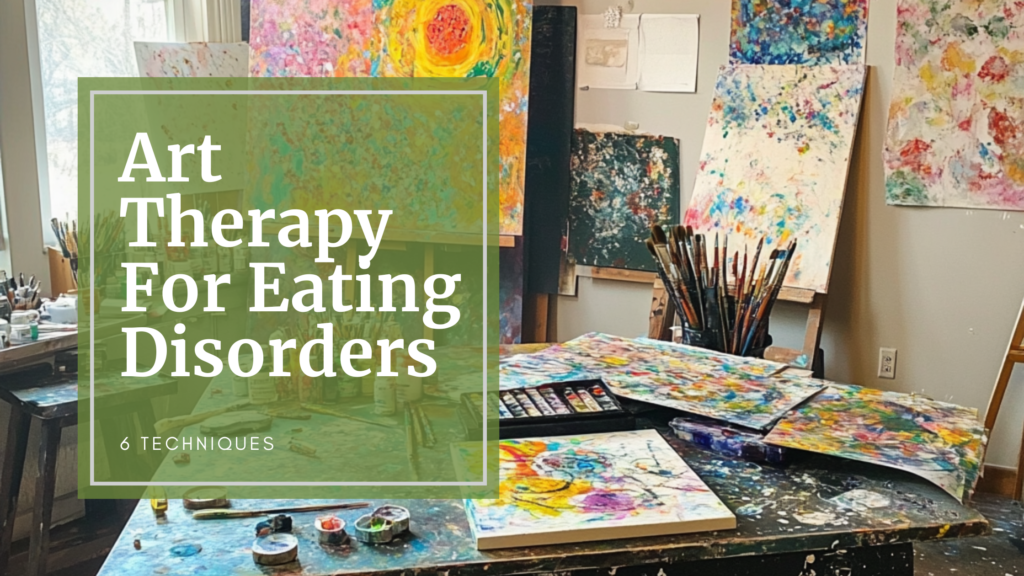
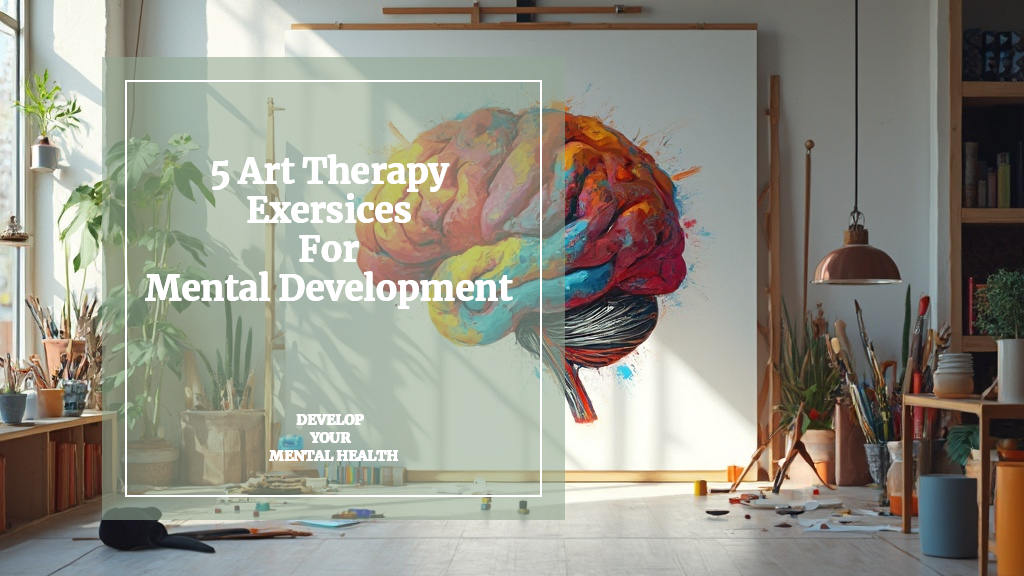




Responses